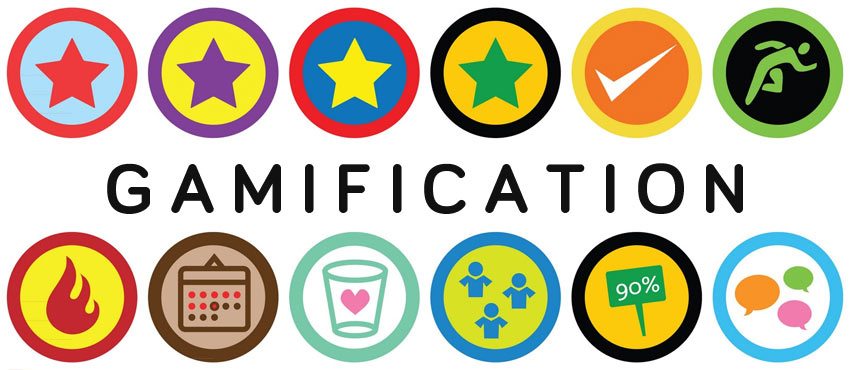
The gamification of education is NOT just playing video games in the classroom - sometimes it doesn't involve digital technologies at all.
Research reveals that the longer students stayed in school, the less likely they are to attend and feel engaged in their classes (4). Yet, game players regularly exhibit persistence, risk-taking, attention to detail and problem solving skills - all behaviors that would be ideal for students to possess in the classroom. Games are important as they embody four elements associated with how people learn; games are “immersive, they require players to have goals and make frequent decisions, they adapt to each player, and they unfold within the context of a community that supports the social dimension of learning” (5). Through the new media literacies of play and performance, players of games have the capacity to experiment with their surrounding as a form of problem solving, and can practice improvisation from varying perspectives (6). Guiding learners through the curriculum by encouraging thought and action is the foundation of intellectual engagement and aids students in the development of original work, collaboration, and confidence as knowledge-builders (4).
I synthesized my understanding of academic literature to create this visualization of the key elements of gamification:
| Special thanks to @TyRiddick for his input. |
The gamification of education supports the constructivist theory where knowledge is not simply transmitted from teacher to student, but actively constructed by the mind of the learner (7). Games allow for role play and the immersion in experience through situated practice (8). Well-designed games allow for players to “construct understanding actively, and at individual paces, and. . . enable players to advance on different paths at different rates in response to each player’s interests and abilities, while also fostering collaboration and just-in-time learning” (1). Since the cycle between choice and result is much shorter in games than in life, hypotheses are regularly tested and refined, lowering the emotional stake of failing and encouraging risk taking (6). With this increased willingness to experiment, players continue to make choices, contextualizing facts and information as tools for problem solving (9). The intrinsic motivations instilled in players of games is only increased through extrinsic positive or negative reinforcements such as awards, achievements, or loss of power often found in games. This sort of operant conditioning affects the users’ choices if faced with a similar scenario later in the game (10). Students are forced to use their power of reasoning to construct knowledge for themselves when immersed in a game, no matter their age. The relevance of these capacities beyond a games context, form the basis of a modern literacy that should be developed by all young people.
See my (first) stop-motion video explaining the four principle elements in game that make them engaging to users:

James Paul Gee is a psycholinguistics researcher who has crossed over into literacy and learning. His book "What Video Games Have to Teach Us About Learning and Literacy" is an excellent account of gaming principles and discuses how these elements can be applied to the k-12 classroom.
Again, gamification is not playing video games - it in the idea that the elements of video games can be applied in other areas.
See the video below for an overview of his work:
1. Klopfer, E., Osterweil, S. and Salen, K. (2009). Moving learning games forward: Obstacles, opportunities & openness. The Education Arcade. Cambridge, MA: MIT Press.
2. Prensky, M. (2001). Chapter 5: Fun, play and games: What makes games engaging. Digital Game-Based Learning. New York: McGraw-Hill.
2. Prensky, M. (2001). Chapter 5: Fun, play and games: What makes games engaging. Digital Game-Based Learning. New York: McGraw-Hill.
3. Deterding, S., Sicart, M., Nacke, L., O’Hara, K. & Dixon, D. (2009). Gamification: Using game design elements in non-gaming contexts. Vancouver: CHI.
4. Willms, J. D., S. Friesen, & P. Milton (2009). What did you do in school today? Transforming classrooms through social, academic and intellectual engagement — First national report. Toronto, ON: Canadian Education Association.
5. Mouza, C. and Lavigne, N. (eds). 2013. Chapter 1: Emerging technologies for the classroom. Explorations in the Learning Sciences, Instructional Systems, and Performance Technologies. New York: Springer Science and Business Media.
6. Jenkins, H. (2009). Confronting the challenges of participatory culture: Media Education for the 21st century. Cambridge, MA: MIT Press.
7. Piaget, J. & B. Inhelder (1967). A child’s concept of space (F. J. Langdon & J. L. Lunzer, Trans.) New York: Norton (Original work published 1948).
8. New London Group. (1996). A pedagogy of multiliteracies: Designing social futures. Harvard Educational Review. 66(1), 60-92.
9. Gee, J.P. (2003). What video games can teach us about literacy and learning. New York: Palgrave-Macmillan.
10. Skinner, B. F. (1953). Science and human behavior. New York: Macmillan.
You have done a great job. I will definitely dig it and personally recommend to my friends. I am confident they will be benefited from this site.
ReplyDeleteElo boosting
Some games can be great for education, like Minecraft for kids or Virtonomics for adults to learn economy. Some countries already use games in official courses.
ReplyDelete